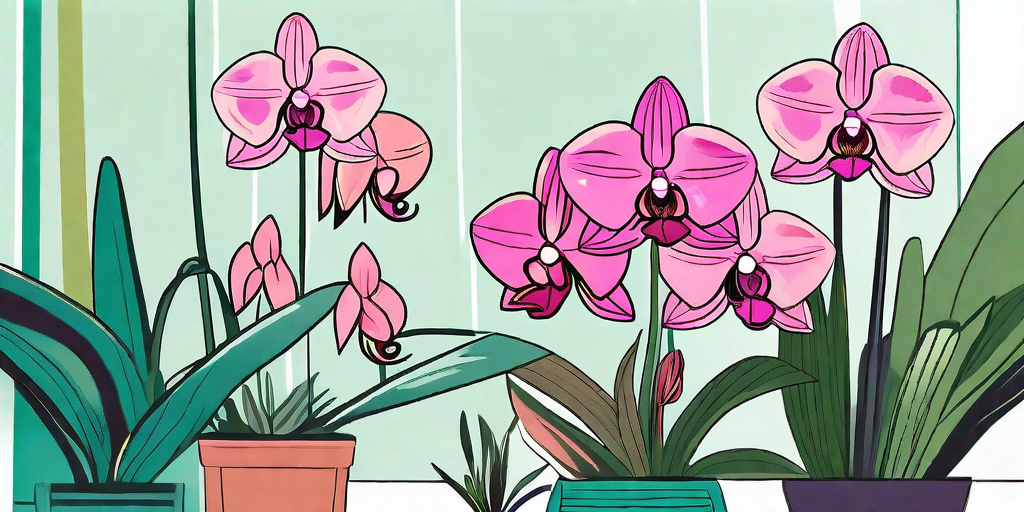
Orchids, with their vibrant colors and exotic appeal, are the divas of the plant world. They are the Beyoncés of your garden, demanding attention and care, but rewarding you with a show-stopping performance. If you're ready to embark on the exciting journey of orchid cultivation, buckle up! This guide is your ticket to becoming an orchid whisperer.
The Allure of Orchids
Orchids are the largest family of flowering plants, with over 25,000 species worldwide. They are known for their stunning beauty and variety. From the dainty and delicate to the bold and dramatic, there's an orchid for every personality. But what makes them so alluring?
Firstly, their flowers are a marvel of nature. Orchids have a unique flower structure that is both complex and beautiful. The symmetry, the vibrant colors, the intricate patterns - it's like each flower is a tiny work of art.
Secondly, orchids have a certain mystique. They are often associated with luxury and exoticism. Growing orchids can feel like having a little piece of the tropics in your own home.
Choosing Your First Orchid
Choosing your first orchid can be a bit like online dating. You're scrolling through pictures, trying to find the one that catches your eye. But remember, looks aren't everything. You also need to consider the orchid's needs and whether you can provide the right environment for it to thrive.
Some popular choices for beginners include the Phalaenopsis (moth orchid), Cattleya (corsage orchid), and Dendrobium (cane orchid). These are generally easier to care for and can tolerate a bit of neglect.
When choosing an orchid, look for healthy, firm leaves and a strong root system. Avoid plants with yellowing leaves or signs of pests and disease.
Orchid Care 101
Light
Orchids are like Goldilocks when it comes to light - they want it just right. Too much light can scorch their leaves, while too little light can prevent them from blooming. Most orchids prefer bright, indirect light. A north or east-facing window is usually ideal.
Not sure if your orchid is getting enough light? Look at its leaves. If they are a healthy green color, you're doing something right. If they are dark green, they may need more light. If they are yellow or have red spots, they may be getting too much light.
Water
Orchids are not cacti. They do need water. But they are also not aquatic plants. They do not want to be waterlogged. Overwatering is a common cause of orchid death, so err on the side of caution.
A good rule of thumb is to water your orchid once a week. However, this can vary depending on the type of orchid, the size of the pot, and the environment. The key is to let the potting mix dry out between waterings.
Humidity
Orchids are tropical plants, and they love humidity. However, they don't want to be drenched in water. A humidity tray or a room humidifier can help provide the right amount of moisture.
Another way to increase humidity is to group your plants together. Plants naturally release moisture into the air, so having several plants in close proximity can create a mini humid environment.
Repotting Your Orchid
Repotting is like moving house for your orchid. It can be stressful, but it's also an opportunity for a fresh start. Orchids generally need to be repotted every 1-2 years, or when the potting mix starts to break down.
When repotting, choose a pot that is just slightly larger than the root mass. Orchids like to be snug in their pots. Use a potting mix specifically designed for orchids, which will provide the right balance of drainage and aeration.
Be gentle when repotting. Orchid roots are sensitive and can be easily damaged. After repotting, give your orchid a good drink, but then let it dry out for a week or so to allow any damaged roots to heal.
FAQs
- Why isn't my orchid blooming?
There could be several reasons. It could be due to insufficient light, incorrect watering, lack of nutrients, or it could simply be that your orchid is not mature enough to bloom yet. Patience is key with orchids.
- What should I do if my orchid's leaves are turning yellow?
Yellow leaves can be a sign of overwatering, too much light, or a nutrient deficiency. Check your care routine and make any necessary adjustments.
- Can I grow orchids from seeds?
Yes, but it's not for the faint-hearted. Orchid seeds are tiny and require very specific conditions to germinate. It's usually easier to buy a mature plant or a young plant (known as a seedling or a plug).
Conclusion
Orchids may seem intimidating, but with a little knowledge and patience, anyone can grow these exotic beauties. Remember, every orchid whisperer started as a beginner. So don't be discouraged if your first orchid doesn't bloom right away or if you make a few mistakes along the way. With time and experience, you'll soon have a collection of orchids that would make even Beyoncé jealous.
So go ahead, unleash the beauty of orchids in your home. You've got this!















